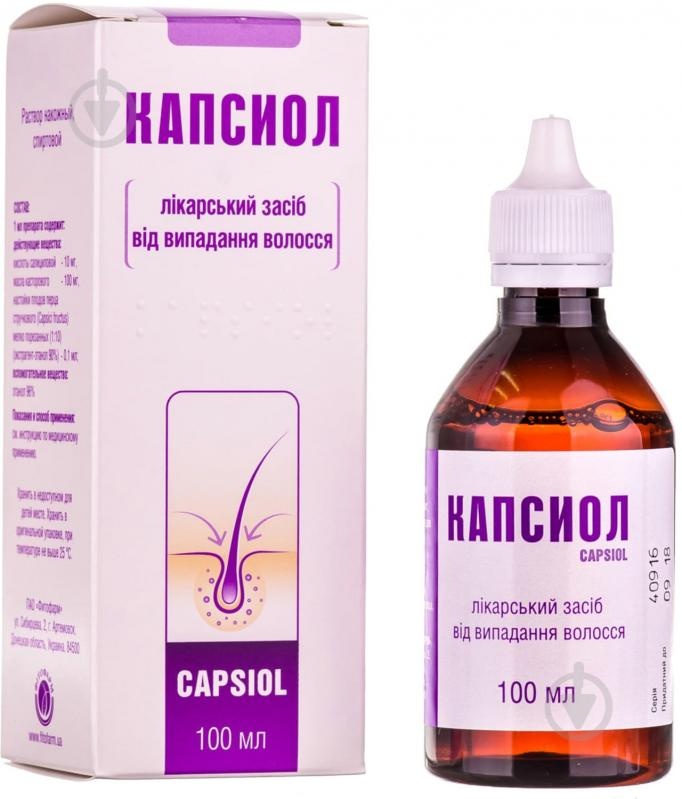

KAPSIOL

Ask a doctor about a prescription for KAPSIOL

How to use KAPSIOL
INSTRUCTIONS for medical use of the medicinal product LOXIDOL (LOXIDOL)
Composition
active substance: meloxicam; 1 ampoule (1.5 ml) of the solution contains meloxicam 15 mg; excipients: meglumine, glycofurol, poloxamer 188, glycine, sodium chloride, sodium hydroxide, water for injections.
Pharmaceutical form
Solution for injections.
Main physical and chemical properties
Light-yellow transparent solution.
Pharmacotherapeutic group
Non-steroidal anti-inflammatory and anti-rheumatic drugs. ATC code M01A C06.
Pharmacological properties
Pharmacodynamics
Meloxicam is a non-steroidal anti-inflammatory drug (NSAID) of the enolic acid class, which exhibits anti-inflammatory, analgesic, and antipyretic effects.
Pharmacokinetics
Absorption: After intramuscular administration, meloxicam is completely absorbed. The relative bioavailability compared to oral administration is almost 100%. Therefore, dose adjustment is not required when switching from intramuscular to oral administration.
Distribution: Meloxicam is strongly bound to plasma proteins, mainly albumin (99%). It penetrates into synovial fluid, where its concentration is half that in plasma.
Metabolism: Meloxicam undergoes extensive biotransformation in the liver.
Excretion: Meloxicam is excreted mainly in the form of metabolites in equal parts with urine and feces.
Clinical characteristics
Indications
Short-term symptomatic treatment of acute attacks of rheumatoid arthritis and ankylosing spondylitis, when other routes of administration cannot be used.
Contraindications
Increased sensitivity to the active substance or to other excipients of the medicinal product;
increased sensitivity to active substances with similar action, such as NSAIDs, acetylsalicylic acid;
meloxicam should not be used in patients who have experienced symptoms of asthma, nasal polyps, angioneurotic edema, or urticaria after taking acetylsalicylic acid or other NSAIDs;
gastrointestinal bleeding or perforation associated with previous NSAID therapy in the anamnesis;
active or recurrent peptic ulcer/bleeding in the anamnesis (two or more separate confirmed cases of ulcer or bleeding);
severe liver insufficiency;
severe renal insufficiency (without dialysis use);
gastrointestinal bleeding, cerebrovascular bleeding in the anamnesis, or other coagulation disorders;
hemostasis disorders or concomitant use of anticoagulants (contraindications related to the route of administration);
severe heart failure;
treatment of perioperative pain in coronary artery bypass grafting (CABG);
III trimester of pregnancy (see section "Use during pregnancy or breastfeeding");
patient age under 18 years.
Interaction with other medicinal products and other types of interactions
Pharmacodynamic interactions
Certain medicinal products or therapeutic groups that may contribute to hyperkalemia: potassium salts, potassium-sparing diuretics, angiotensin-converting enzyme inhibitors (ACE), angiotensin receptor antagonists (ARA) II, NSAIDs, (low-molecular-weight or unfractionated) heparins, cyclosporine, tacrolimus, and trimethoprim
Pharmacokinetic interactions
Lithium: It has been reported that NSAIDs increase the level of lithium in plasma (due to decreased renal excretion of lithium), which can reach toxic levels.
Methotrexate: NSAIDs may decrease the tubular secretion of methotrexate, thereby increasing its concentration in plasma.
Special warnings and precautions for use
Side effects
Side effects can be minimized by using the smallest effective dose of the medicinal product for the shortest period of time necessary to control the disease.
Effect on the gastrointestinal tract
As with the use of other NSAIDs, potentially life-threatening gastrointestinal bleeding, ulcers, or perforation may occur at any time during treatment, with or without previous symptoms or serious gastrointestinal diseases in the anamnesis.
Effect on the cardiovascular system
During the use of the medicinal product, patients with arterial hypertension and/or congestive heart failure from mild to moderate degree in the anamnesis should be closely monitored, as fluid retention and edema have been observed during NSAID treatment.
Effect on the skin
During the use of meloxicam, life-threatening severe skin lesions have been reported: Stevens-Johnson syndrome and toxic epidermal necrolysis.
Ability to influence the reaction rate when driving vehicles or using other mechanisms
There are no special studies on the effect of meloxicam on the ability to drive vehicles or use other mechanisms.
Method of administration and dosage
Dosage
The medicinal product should be used in a dose of 15 mg once a day (1 injection).
Special patient categories
Elderly patients: The recommended dose of the medicinal product for elderly patients is 7.5 mg per day (half an ampoule of 1.5 ml).
Patients at increased risk of side effects: Patients at increased risk of side effects, such as gastrointestinal diseases in the anamnesis or risk factors for cardiovascular diseases, should start using the medicinal product with a dose of 7.5 mg per day (half an ampoule of 1.5 ml).
Overdose
Symptoms of acute NSAID overdose are usually limited to lethargy, drowsiness, nausea, vomiting, and epigastric pain, which are generally reversible with supportive therapy.
Side effects
Study data and epidemiological data suggest that the use of some NSAIDs (especially in high doses and with prolonged treatment) may be associated with a small increased risk of vascular thrombotic events, such as myocardial infarction or stroke.
From the blood and lymphatic system
uncommon – anemia; rare – deviations of blood test parameters from normal (including changes in leukocyte count), leukopenia, thrombocytopenia.
From the immune system
uncommon – allergic reactions, except anaphylactic or anaphylactoid; frequency unknown – anaphylactic shock, anaphylactic reaction, anaphylactoid reaction, including shock.
Use during pregnancy or breastfeeding
Pregnancy
Suppression of prostaglandin synthesis may negatively affect pregnancy and/or embryo/fetal development.
Breastfeeding period
Although there are no specific data on meloxicam, it is known that NSAIDs can penetrate into breast milk.
Storage conditions
Store at a temperature not exceeding 25 °C in the original packaging and out of reach of children.
Incompatibility
Due to possible incompatibility, the medicinal product should not be mixed with other preparations in the same syringe.
Packaging
1.5 ml of solution in a glass ampoule; 3 ampoules in a contour cell package; 1 contour cell package in a cardboard box.
Release category
By prescription.
Manufacturer
PharmaVision San. ve Tic. A.S./PharmaVision San. ve Tic. A.S.
Manufacturer's location and address
Davutpasa Cad. No:145 Zeytinburnu Istanbul, Turkey/Davutpasa Cad. No:145 Zeytinburnu Istanbul, Turkey.
Applicant
LLC "WORLD MEDICINE", Ukraine/ WORLD MEDICINE, LLC, Ukraine.
- Country of registration
- Prescription requiredNo
- Manufacturer
- This information is for reference only and does not constitute medical advice. Always consult a licensed doctor before taking any medication. Oladoctor is not responsible for medical decisions based on this content.
- Alternatives to KAPSIOLDosage form: solution, 2% in 60 ml bottleActive substance: minoxidilPrescription not requiredDosage form: solution, 5% in 60 ml bottleActive substance: minoxidilPrescription not requiredDosage form: solution, 2% in 60ml bottleActive substance: minoxidilManufacturer: Індастріал Фармасеутіка Кантабріа, С.А.Prescription not required
Alternatives to KAPSIOL in other countries
The best alternatives with the same active ingredient and therapeutic effect.
Alternative to KAPSIOL in Spain
Alternative to KAPSIOL in Poland
Online doctors for KAPSIOL
Discuss dosage, side effects, interactions, contraindications, and prescription renewal for KAPSIOL – subject to medical assessment and local rules.














